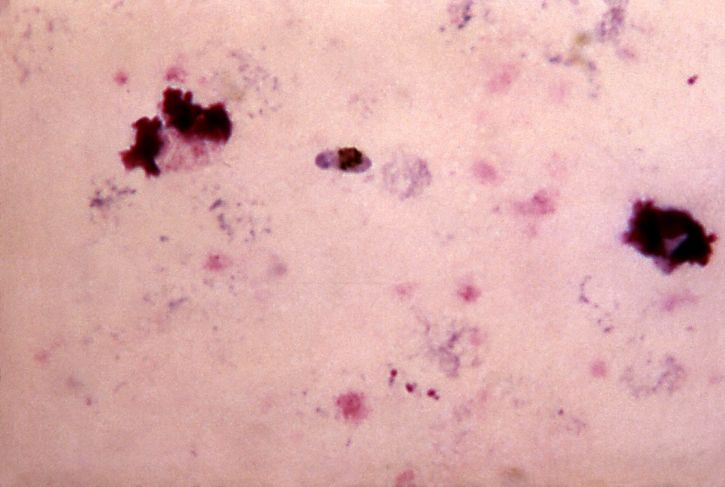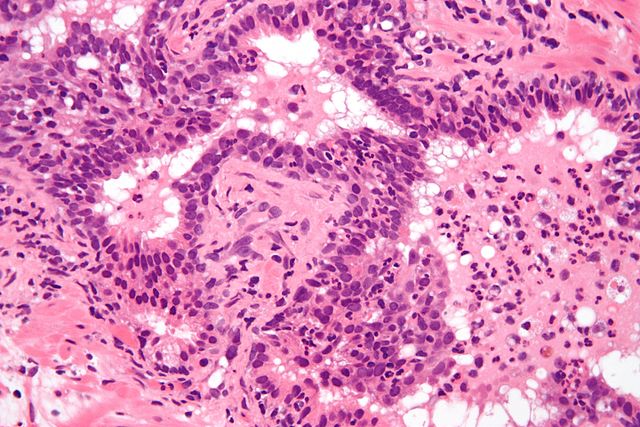Difference Between Infection and Inflammation
What is Infection?
Infection is a contagion of the body tissues with disease-causing agents. These agents multiply in the body and cause the specific response of the host’s immune system. The response is provoked by the infectious agents and the toxins produced by them.
Infections are most commonly caused by microorganisms such as bacteria and viruses, but fungi (causing different types of mycoses) and macroparasites (ticks, worms) can also induce an infection.

The symptoms of infection differ, depending on the type of the pathogen. Some of these symptoms affect the entire body, others – only certain parts of the body.
Symptoms of infection, affecting the entire body:
- Weight loss;
- Appetite loss;
- Fatigue;
- Night sweats;
- Fever and chills;
- Pain.
Symptoms of infection, affecting certain body parts are:
- Rash – affects the skin;
- Cough, runny nose, stuffy nose, – affect the respiratory organs;
- Vomiting, diarrhea, abdominal pain – affect the digestive tract.
The most common are viral and bacterial infections. For their treatment and recovery, it is particularly important to identify the causative agent, in order to prescribe the appropriate treatment. However, this differentiation is often complicated because some of the symptoms of bacterial and viral infections overlap.
What is Inflammation?
Inflammation is part of the response of the body tissues to harmful stimuli. The stimuli can be irritants, damaged cells, or pathogens.
The stimuli, causing inflammation can be:
- Microorganisms such as viruses, bacteria, fungi, etc.
- Toxins;
- Chemicals;
- Allergens;
- Impaired cell integrity (injury);
- Burning, frost;
- Foreign body;
- Radiation (including ultraviolet rays).
Inflammation is a protective response of the body by which it attempts to discard the irritant, stop its spread, and begin the process of healing of the affected tissues. It involves molecular mediators, immune cells, and blood vessels.

The symptoms of inflammation are:
- Swelling;
- Redness;
- Warming at the affected place and/or fever;
- Pain;
- Disturbed function.
Inflammation is often caused by infection. But unlike infections, which are caused by external organisms, the accompanying inflammation is the “internal” response of the organism to the causative agent. This response is stereotyped and is called a non-specific immune defense. It opens the way for the specific immune response that attacks the recognized microorganisms with specialized immune cells and methods.
Depending on the time of the reaction and the duration, the inflammation can be:
- Acute – begins within hours or 1-2 days of injury or contamination and lasts for several days;
- Chronic – its onset is delayed over time and can last for months and even years if the microorganisms are not destroyed or the foreign body is not removed.
If the treatment of an acute inflammation fails, it may become chronic.
Difference Between Infection and Inflammation
-
Definition
Infection: Infection is a contagion of the body tissues with disease-causing agents, their multiplication in the body and the specific response of the host’s immune system to the infectious agents and the toxins produced by them.
Inflammation: Inflammation is a protective response of the body to harmful stimuli, aiming to discard the irritant, stop its spread, and begin the process of healing of the affected tissues.
-
Causative agents
Infection: Infections are most commonly caused by microorganisms such as viruses and bacteria, but larger organisms such as fungi and macroparasites can also be a source of infection.
Inflammation: Inflammation is caused by irritants, damaged cells, or pathogens, like viruses, bacteria, fungi, toxins, chemicals, allergens, injury, burning, frost, foreign body, radiation, etc.
-
Symptoms
Infection: The symptoms of infection differ, depending on the type of the pathogen. Symptoms, affecting the entire body are fatigue, loss of appetite, weight loss, fever and chills, night sweats, pain. Symptoms, affecting certain body parts are rash, cough, stuffy nose, runny nose, vomiting, abdominal pain, diarrhea, etc.
Inflammation: The symptoms of inflammation are swelling, redness, warming at the affected place and/or fever, pain, disturbed function, etc.
Infection Vs. Inflammation: Comparison Chart

Summary of Infection Vs. Inflammation:
- Infection is a contagion of the body tissues with disease-causing agents. These agents multiply in the body and cause the specific response of the host’s immune system. The response is provoked by the infectious agents and the toxins produced by them.
- Inflammation is a protective response of the body to harmful stimuli, aiming to discard the irritant, stop its spread, and begin the process of healing of the affected tissues.
- Infections are caused by microorganisms such as viruses and bacteria, but larger organisms such as fungi and macroparasites can also be a source of infection. Inflammation is caused by irritants, damaged cells, viruses, bacteria, fungi, toxins, chemicals, allergens, injury, burning, frost, foreign body, radiation, etc.
- The symptoms of infection affecting the entire body are fatigue, loss of appetite, weight loss, fever and chills, night sweats, pain. The symptoms of infection, affecting certain body parts are rash, cough, runny nose, stuffy nose, vomiting, diarrhea, abdominal pain. The symptoms of inflammation are swelling, redness, warming at the affected place and/or fever, pain, disturbed function.
- Difference Between Gallstones and Cholecystitis - September 5, 2021
- Difference Between Constipation and Cramping - August 4, 2021
- Difference Between Whole Genome Sequencing and Microarray - May 6, 2021
Search DifferenceBetween.net :
2 Comments
Leave a Response
References :
[0]Serhan, C., P. Ward, D. Gilriy (Eds.). Fundamentals of Inflammation. Cambridge: Cambridge University Press. 2010. Print.
[1]Brooks, G., K. Carroll, J. Butel, S. Morse, T. Mietzner. Melnick&Adelbergs Medical Microbiology. 26th
[2]Sabatine, M. (Ed.). Pocket Medicine. 6th edition. Hong Kong: Wolters Kluwer. 2017. Print.
[3]Image credit: https://pixnio.com/science/microscopy-images/malaria-plasmodium/infection-with-one-type-of-malaria-plasmodium-falciparum-if-not-promptly-treated-may-cause-kidney-failure
[4]Image credit: https://upload.wikimedia.org/wikipedia/commons/thumb/d/d0/Acute_inflammation_of_prostate.jpg/640px-Acute_inflammation_of_prostate.jpg

Nice
These informations will be useful in practice.Thanks a lot.